The Marquesas Islands are all remote. The closest major land mass is some 4,000 nautical miles away. The larger of the islands like Nuku Hiva and Hiva Oa do have airports making them more accessible. There are flights between those islands and Tahiti. Fatu Hiva does not have an airport due to its challenging topography. Geographically it is also the most remote of the Marquesas islands as it lies southeast of Hiva Oa and Tahuata by around 44 nautical miles. We left Hiva Oa for the sail down on a beautiful morning.
We arrived at the famous “Bay of Virgins,” Hanavavae, Fatu Hiva later in the afternoon. The anchorage is small, and deep. As we searched for a spot to drop the anchor I spotted something gliding just under the surface of the water. There were a few large manta rays gliding around! We anchored and dug in well in 30 meters of water. This was our deepest anchorage to date.
The following morning our friends on “CoKeMa” arrived in the bay making their first landfall after their passage from the Galapagos Islands. We went ashore together to hike up to a waterfall not far from the small town of Hanavave.
There are roughly 600 inhabitants on the island that live in one of two towns. Hanavavae is the northern town, and Omoa, the larger of the two is in the southern bay. These two bays are the only access to the islands. The locals are all friendly and willing to help by giving directions and offering fruit to visitors. Some of the fruit is offered for free, and some offered for a small fee. We walked up the road taking in the scenery around us. The elevation change is quite steep and is a challenge.
We reached the turn off from the paved road and continued on a dirt road and eventually turned off the road onto a single path trail up to the base of the waterfall. It was a strenuous hike and quite warm. We made it to the waterfall and it was beautiful. We took it all in as we rested before hiking back down.
The walk back to town was easier. We stopped at the one store in Hanavavae to see if they had any eggs or lettuce. They did not on this occasion. We did visit the home of a couple we had met the day before as they offered to sell us some fruit. Giselle and I walked up the hill to their home. They picked fresh pamplemouse, papaya, passion fruit, star fruit and bananas. We could barely carry the fruit. They told us the price which was an astounding, $1 USD. We didn’t have change and offered them the equivalent of $5 USD in Polynesian Francs. They felt bad not having the change so they piled even more fruit including pineapples. All fresh, from their backyard.
We ended the day by having dinner at a local home. Our friends, Fred and Ita, made reservations for us and we met at the home of Sopi and Lea for a traditional Marquesan feast. They roasted a pig in a Marquesan Oven, and also prepared sweet potatoes, shredded papaya, and fish. It was delicious. The cost was $30 per person.
The people of Fatu Hiva live off what they grow in their backyards, hunting wild boar and fishing. They also sell wood carvings, tapa cloths and other items crafted by hand. It is a simple life. The population has remained roughly the same over the last few decades. There is a primary school on the island but no secondary schools. To continue education the children must leave Fatu Hiva, first for Hiva Oa, then eventually to Tahiti. Very few of the children return to Fatu Hiva after leaving for high school.
We returned to our floating home after dinner and thought about all that we had experienced in this one day of exploring this remote island. Is it paradise? Some might believe so. It is certainly a simple life. The remoteness is stark though. The closest hospital is hundreds of miles away. It is a different way of life where concessions have to be made in order to enjoy this paradise.

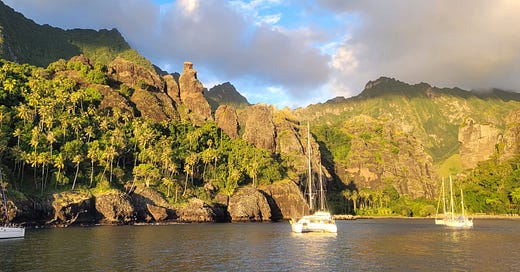





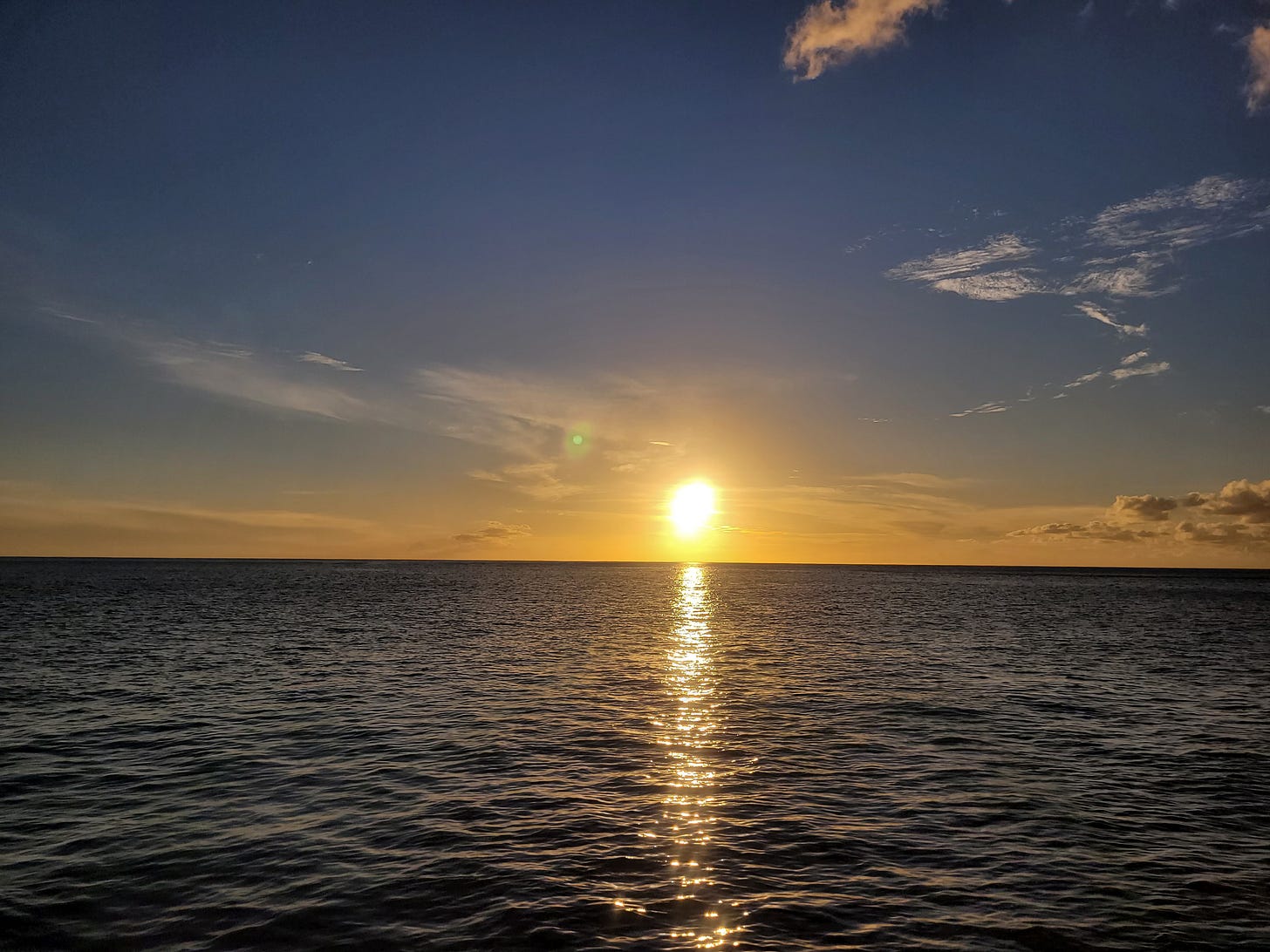
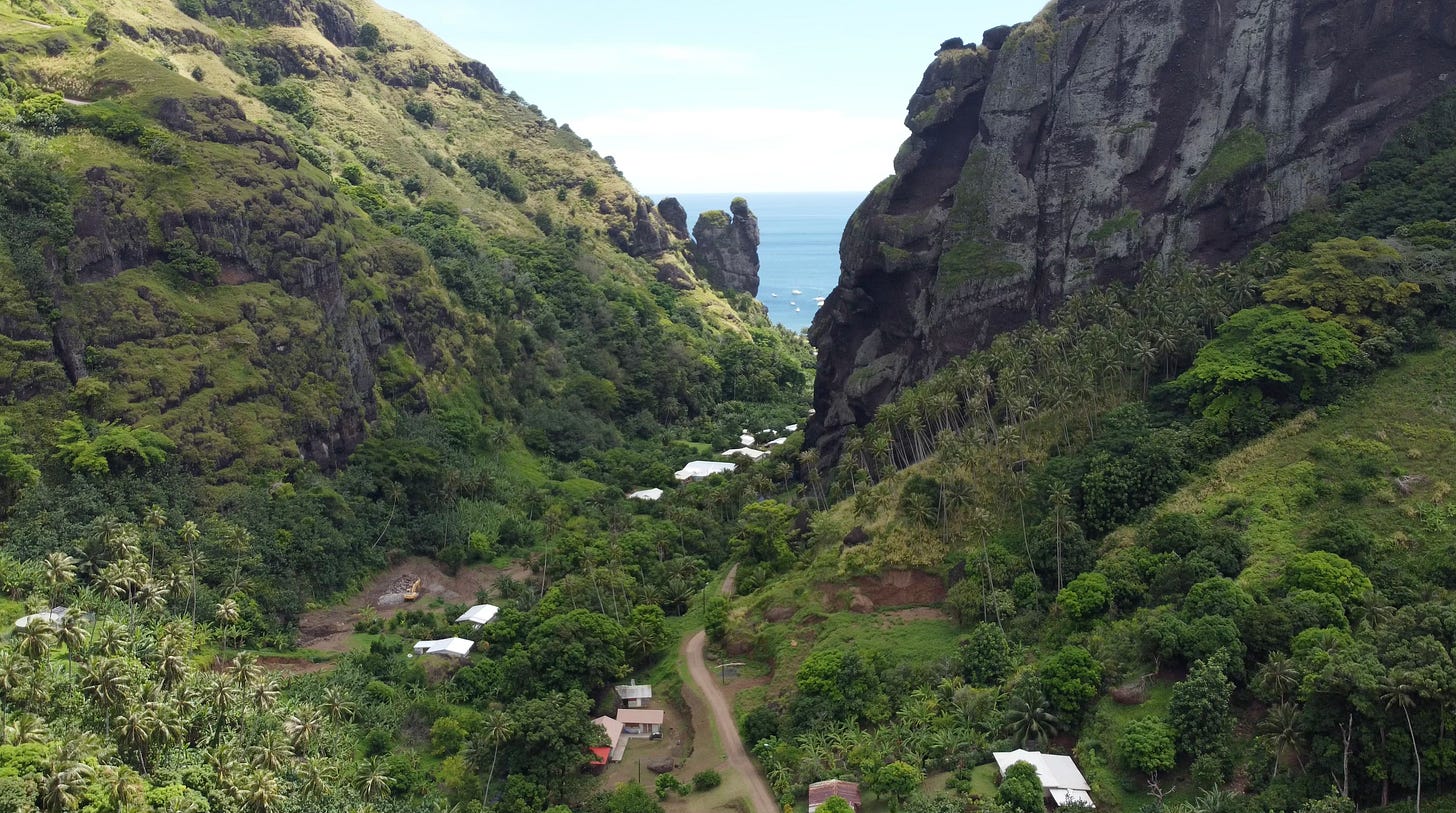

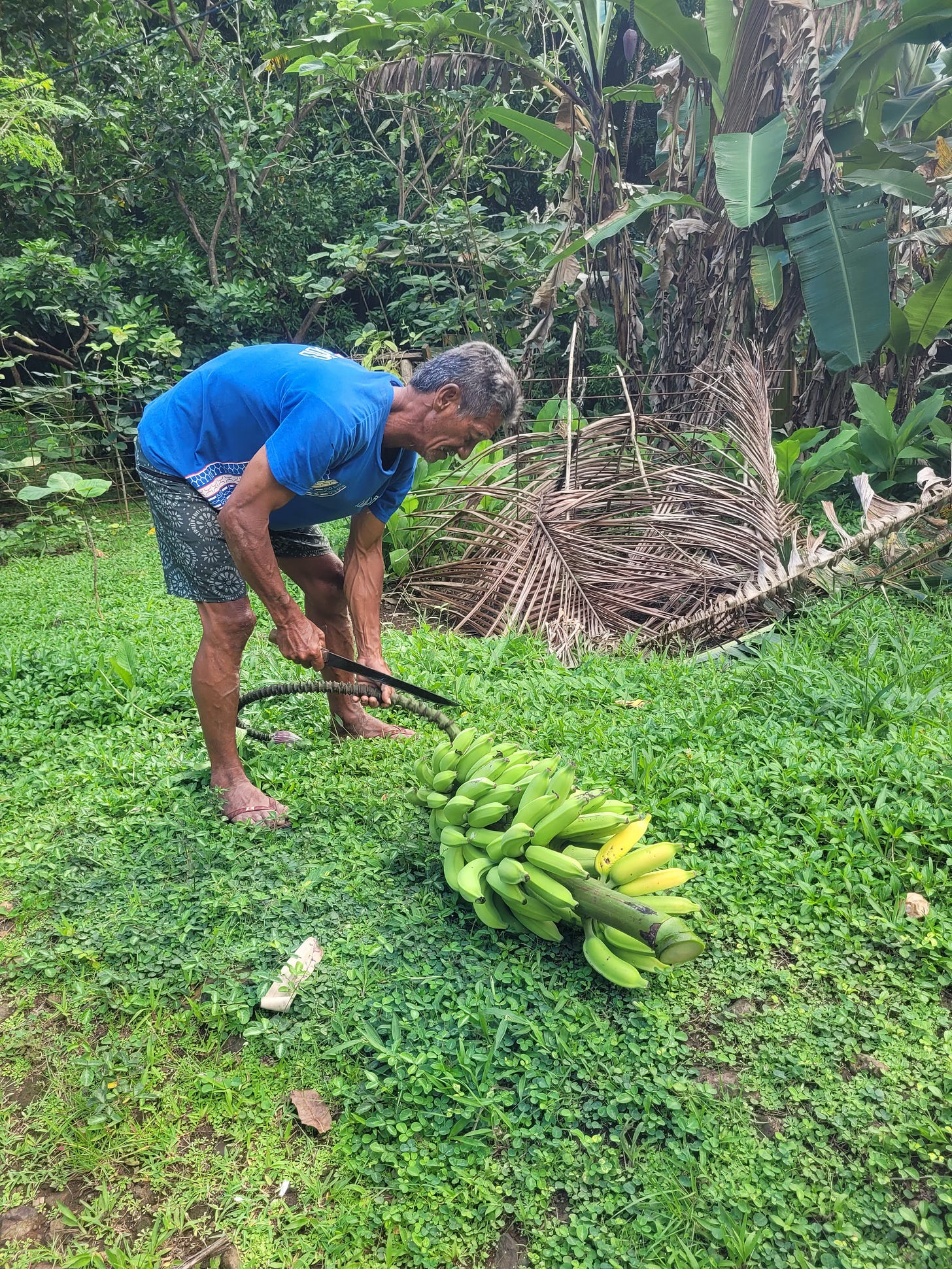
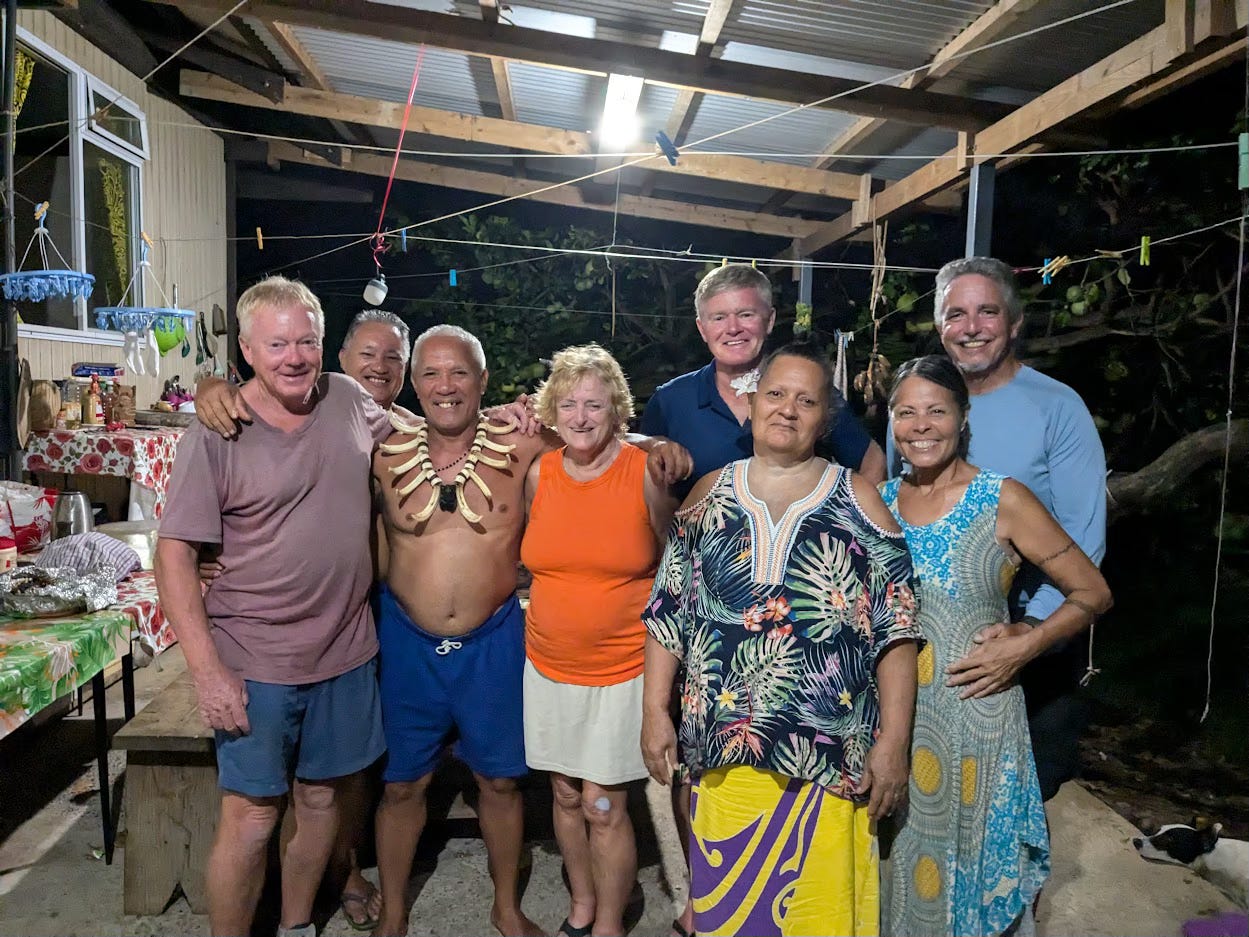
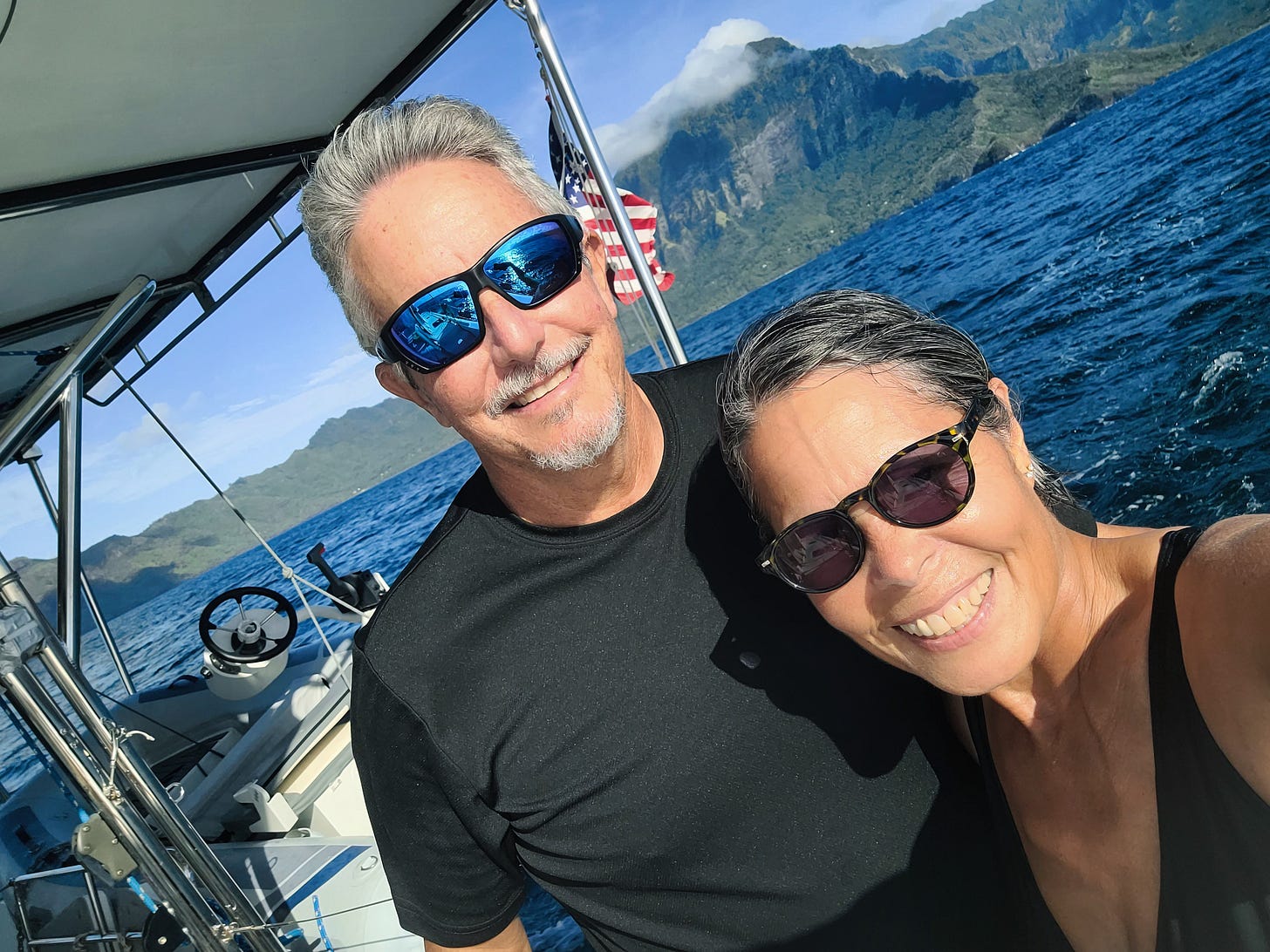
Breathtakingly beautiful. I guess if they’re happy with their simple life, that’s what’s important.
Stay safe.
Sailing looks FABULOUS on both of you❤️ love you both❤️❤️‼️‼️